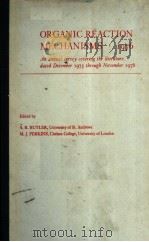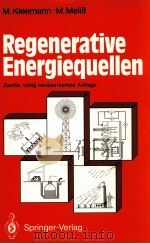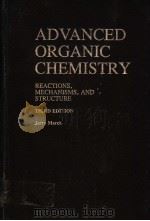《organic and bio-organic mechanisms P298》
| 作者 | 编者 |
|---|---|
| 出版 | 未查询到或未知 |
| 参考页数 | |
| 出版时间 | 没有确切时间的资料 目录预览 |
| ISBN号 | 无 — 求助条款 |
| PDF编号 | 820551408(仅供预览,未存储实际文件) |
| 求助格式 | 扫描PDF(若分多册发行,每次仅能受理1册) |

1THE TRANSITION STATE1
1.1Mechanism as a progression of states1
1.2 Structure and its interpretation1
1.3 Interconversion of states—reaction and encountercomplexes4
1.4 Methods of representing reaction mechanisms4
1.5 General considerations concerning reaction mechanisms6
1.6 Energy transfer, redistribution and relaxation12
1.7 Stereoelectronic effects16
1.8 Principle of non-perfect synchronization18
1.9 Principle of least nuclear motion19
1.10 Is the transition state a molecule?19
2KINETICS AND MECHANISM23
2.1 Introduction23
2.2 Kinetic method24
2.3 Rate law and mechanism25
2.4 Steady state and non-steady state25
2.5 Rate-limiting step26
2.6 Curtin-Hammett principle28
2.7 Which transition state is being observed kinetically?29
2.8 Demonstration of intermediates by kinetics30
2.9 Change in mechanism33
2.10 Rules for change in mechanism or rate-limiting step36
2.11 Trapping of intermediates37
2.12 Composition of the transition state of the rate-limiting step38
2.13 Kinetic ambiguities40
2.14 Microscopic reversibility42
2.15 Kinetic and thermodynamic control43
2.16 Isotope labelling techniques and detection of intermediates45
3 THE EFFECT OF CHANGES IN REACTANT STRUCTURE52
3.1Introduction52
3.2 Comparison of known with unknown—the Lefflerapproach52
3.3 Polar and steric substituent effects53
3.4 Hammett's equation55
3.5 Bronsted's equation62
3.6 Transition-state acidity and transition-state complexation74
3.7 Topology of transition states75
4 KINETIC AND EQUILIBRIUM ISOTOPE EFFECTS80
4.1Origin of isotope effects80
4.2 Measurement of kinetic isotope effects84
4.3 Primary isotope effects86
4.4 Solvent isotope effects88
4.5 Heavy-atom isotope effects92
4.6 Secondary isotope effects and transition-state structure94
5 TRANSITION STATES FROM EXTERNAL EFFECTS97
5.1Introduction97
5.2 Solvent effects97
5.3 Reactions in strongly acidic and strongly basic media101
5.4 Solvent ionizing power105
5.5 Variation of pressure and temperature107
6 TRANSITION STATE STRUCTURES-ANOMALIES116
6.1Introduction116
6.2 Reactivity-selectivity relationship116
6.3 Microscopic medium effects121
6.4 Curvature in free-energy relationships123
6.5 Bronsted anomalies128
6.6 Do experimental parameters directly measure transition-statestructures?130
7 BIO-ORGANIC GROUP TRANSFER REACTIONS134
7.1Relative timing of bond formation and bond fission134
7.2 Acyl group transfer145
8 CATALYSIS161
8.1Reactivity161
8.2 Coenzymes166
8.3 Proton transfer174
8.4 Metal ions179
8.5 Intramolecular reactions184
9 COMPLEXATION CATALYSIS196
9.1General considerations196
9.2 Covalent catalysis198
9.3 Inclusion complexation199
9.4 Catalysis by organized aggregates and phases205
9.5 Future directions212
10 SOME ENZYMES214
10.1Introduction214
10.2 Enzymes catalysing acyl group transfer215
10.3 Catalysis of proton transfer reactions224
10.4 Carbon-carbon bond formation and fission232
10.5 Transfer of the hydride ion235
10.6 Alkyl group transfer240
APPENDICES247
A.1IUPAC system for symbolic representation of reactionmechanisms247
A.2 Supplementary tables248
A.3 Estimation of ionization constants258
A.4 Estimation of partition coefficients261
A.5 Fitting data to theoretical equations264
REFERENCES267
INDEX291
《organic and bio-organic mechanisms P298》由于是年代较久的资料都绝版了,几乎不可能购买到实物。如果大家为了学习确实需要,可向博主求助其电子版PDF文件。对合法合规的求助,我会当即受理并将下载地址发送给你。
高度相关资料
-

- REACTION MECHANISMS IN ORGANIC CHEMISTRY
- 1977 ABACUS PRESS
-
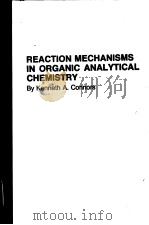
- REACTION MECHANISMS IN ORGANIC ANALYTICAL CHEMISTRY
- A WILEY-INTERSCIENCE PUBLISCATION
-

- ORGANIC REACTION MECHANISMS·1987
- JOHN WILEY & SONS
-

- Organic reaction mechanisms 1988
- JOHN WILEY & SOW
-
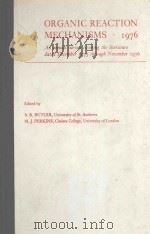
- ORGANIC REACTION MECHANISMS 1976
- 1977 WILEY
提示:百度云已更名为百度网盘(百度盘),天翼云盘、微盘下载地址……暂未提供。➥ PDF文字可复制化或转WORD

